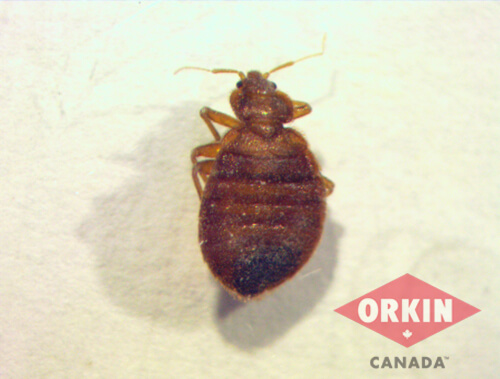
Getting Bit by Bed Bugs
Bed bugs are blood-sucking insects that rely on humans for meals. Getting bit by bed bugs can have different effects on each individual. While people with sensitive skin may have more severe reactions to a bed bug bite, the most common symptom is the formation of small, itchy bumps or welts.
Are Bed Bug Bites a Good Way to Identify an Infestation?
Bed Bug Bite Appearance
Bites, stains (specks of blood or black fecal matter) on bedding, and bed bug sightings are the main signs of infestation. Still, using bites to identify bed bugs is not reliable and is not recommended. While some homeowners may develop red, itchy welts immediately after a bed bug feeds, it may take hours or even days for others to show signs of a bite.
People commonly mistake a variety of other insect bites for getting bit by bed bugs. Many insect pest bites can create skin irritation similar to a bed bug, including mosquitoes, fleas, lice, and mites.
Bed Bug Bite Location
Although an unproven observation some sources suggest that the location of bed bug bites on the body can help residents recognize an infestation. This is an unreliable diagnostic tool. Bed bugs will bite any exposed part of the body. In fact, which part of the body that the pests feed on mostly depends on the sleeping habits of its host.
Problems with Itchy Bed Bug Bites
Not only are bed bug bites sometimes itchy, but they can cause additional problems. The pests do not carry or transmit any diseases, but people are often tempted to scratch itchy, irritated areas. Frequent scratching can cause secondary infections. While rare, allergic reactions may also result from getting bit by bed bugs.
Removing Bed Bugs
Residents can take preventative measures like cleaning and inspecting bedding. However, the best way to avoid irritating, itchy bed bug bites is to get rid of the pests altogether. Contact the licensed professionals at Orkin Canada to properly identify and address bed bug infestations.
You may also like
Canada's Top 25 Bed Bug Cities Of 2023
Bed bugs are extremely efficient hitch hikers. They can move easily across a room and climb onto luggage or anything left on a bed in just one night. Learn which cities have made Canada’s top 25 bed buggiest cities.
Canada's Top 25 Bed Bug Cities Of 2022
Bed bugs are extremely efficient hitch hikers. They can move easily across a room and climb onto luggage or anything left on a bed in just one night. Learn which cities have made Canada’s top 25 bed buggiest cities.
Bugs & Kisses: Tips To Keep Pests Out Of Your Valentine's Day
Valentine’s Day is a holiday that’s all about spreading love and kindness. Unfortunately, the sweetness of this tradition also makes it an opportunity to attract and harbour pests, which can lead to serious pest infestations. If love is in the air at your property this year, it is important to take precautions against the various pests that intend to intrude on your plans. Whether you’re celebrating love day with family, friends, or a significant other, the gathering and gift giving traditions that go hand-in-hand with Valentine’s Day increase the probability of pests reaching you or your home. To help you avoid insects spoiling your romance, we’ve provided you with some tips on how to have a pest-free Valentine’s Day.
Who Invited That Pest? Tips To Avoid Pest Infestation At Your Next Party
Everyone loves a good party, but so do pests. For those looking to host a successful party, it is important to be aware of the possibility of having some uninvited guests…we mean pests. Whether you're hosting a Super Bowl party, throwing a birthday bash, or enjoying a night in with friends, remember that pests are popular party favours that may be left behind. While there’s not much you can do to prevent these pests from entering your home via your guests, you can take precautions to nip the problem at the source and avoid an infestation. To make it easier for you, we’ve put together a few tips to make sure your party stays pest-free.
Remove pests from your home, and stop them from coming back
We work hard to listen, understand and assess your unique situation. Request a free, no-obligation estimate today for a customized pest program that fits your needs.
Request a Free Home EstimateRequest a Free Business Consultation

